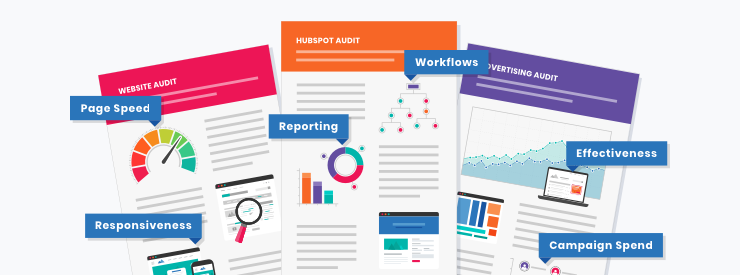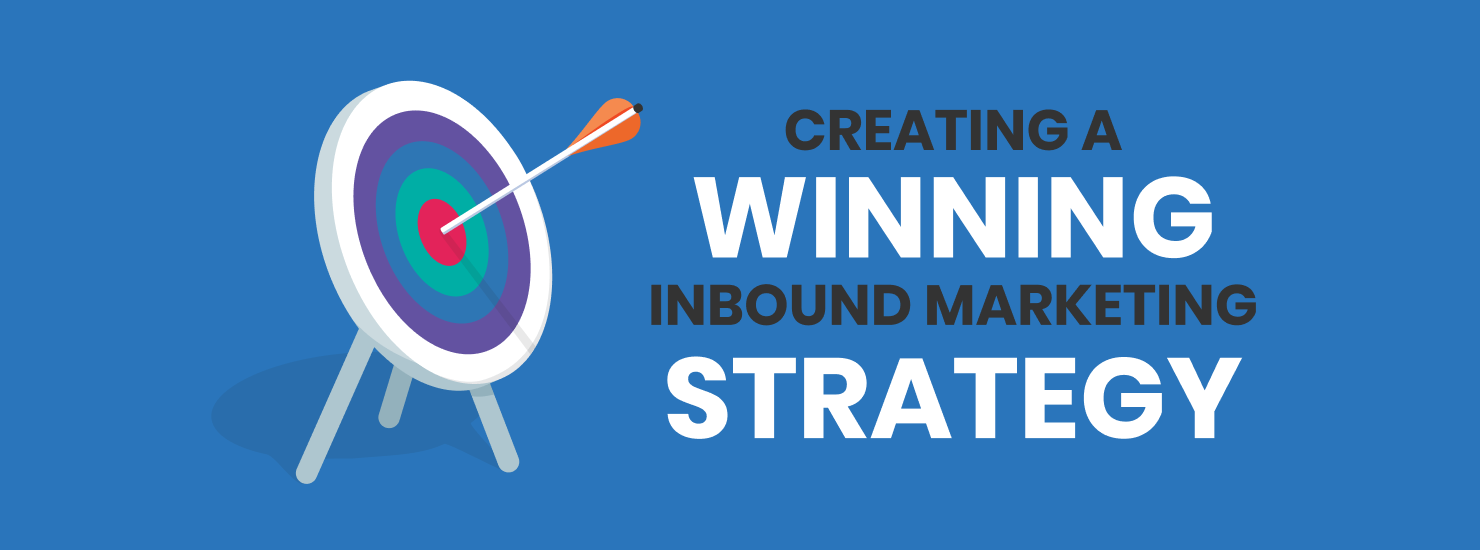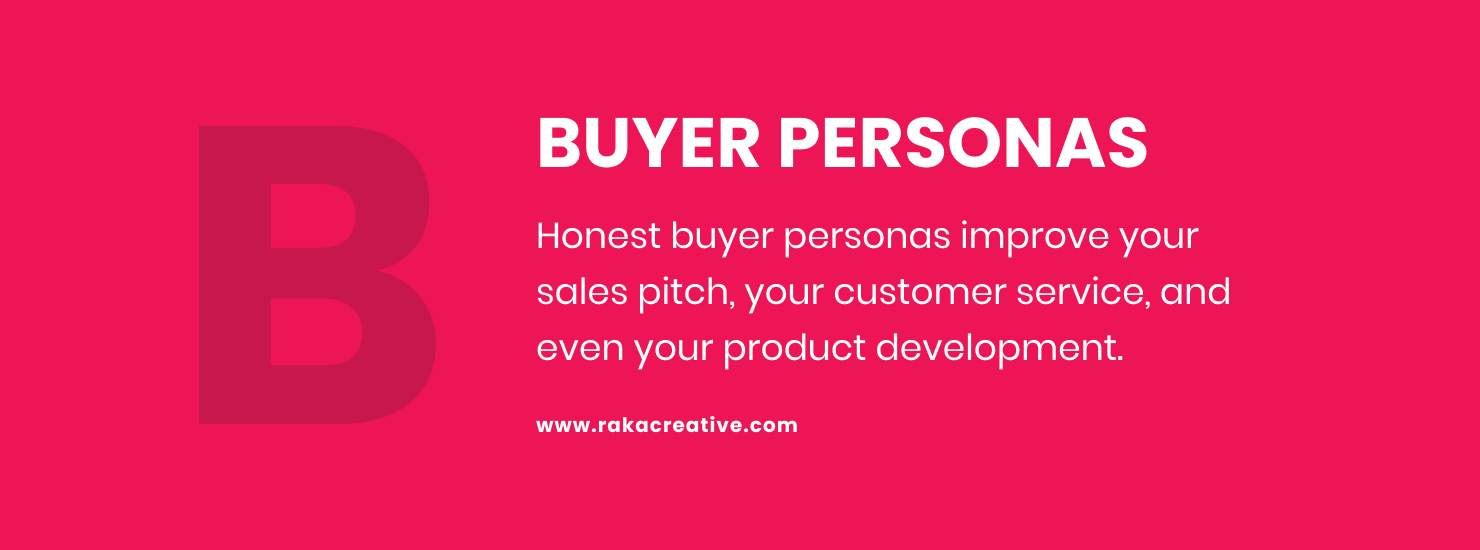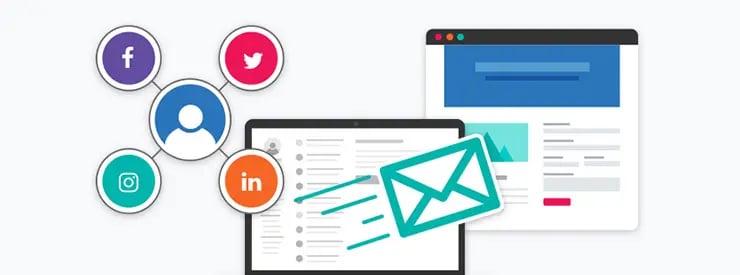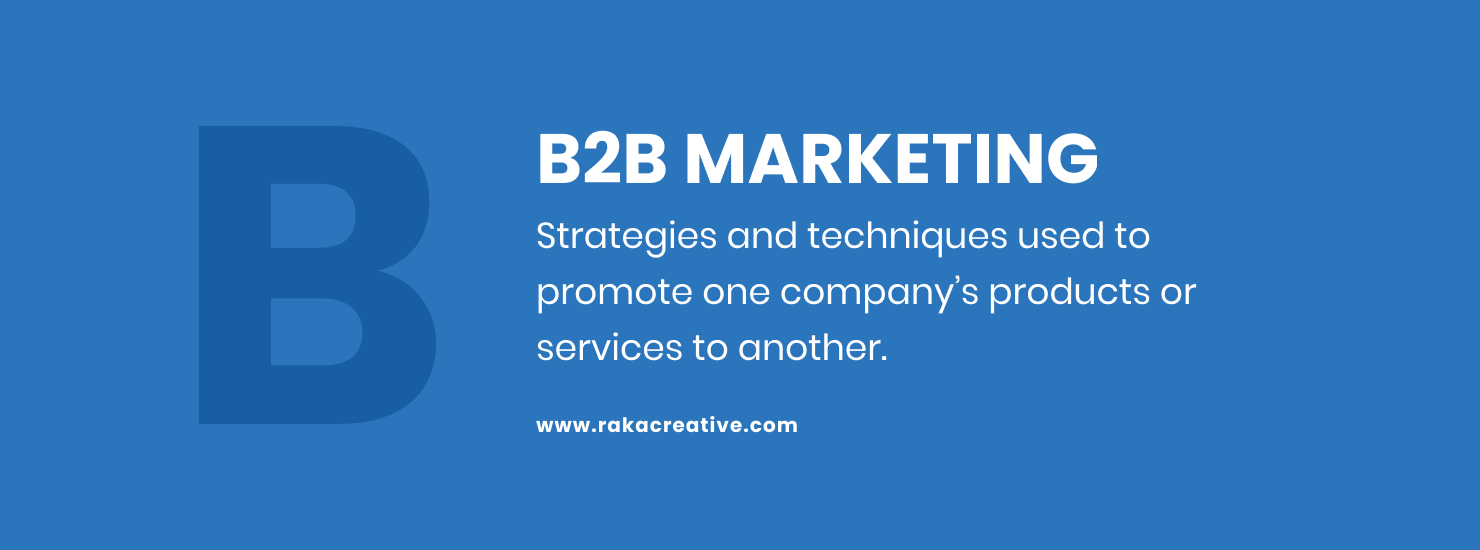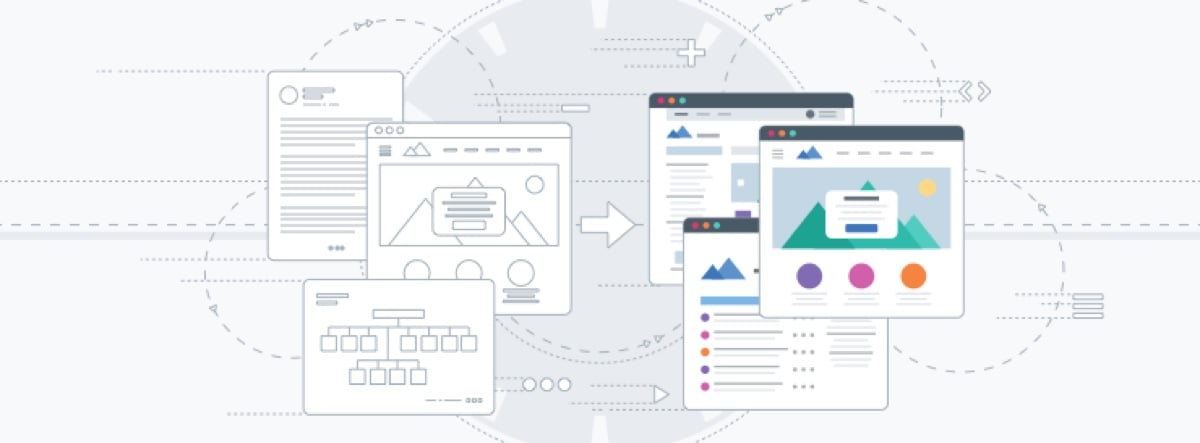
How Inbound Marketing Can Help Your Business
1 How does inbound marketing work?
Regardless of industry, brand, or audience, there are four basic stages of the inbound marketing methodology and they haven’t changed since HubSpot founders Brian Halligan and Dharmesh Shah coined the term in 2010.
Those four stages are:
- AttractProvide helpful content via your website or blog that is optimized for the terms your target audience is searching for.
- ConvertUsing actionable language and calls-to-action, convert your audience members into leads. This happens when a visitor gives you permission to record their email address or other contact information in exchange for something of value you can provide, such as a PDF guide or other content offer, webinar tutorial, or free consultation.
- CloseTurn those leads into customers by nurturing them with email marketing, other valuable content, and ultimately sales conversations.
- DelightMake your new customers want to become promoters or evangelists of your brand by providing exceptional customer service and making sure their experience with your company is one they’ll want to recommend to everyone they know.
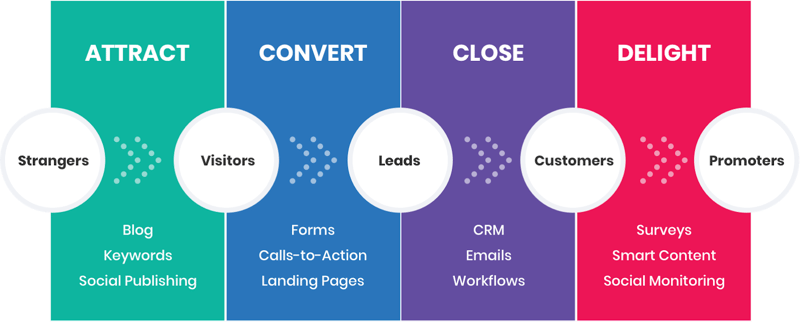
Inbound marketing tactics include everything from content marketing and social media to technical SEO and UX optimization, email marketing, video, and even digital advertising. Whatever the specific methods, the point is to provide value to your potential customers and develop a relationship with them long before they've made a purchase, then continue that relationship long after.
Raka has been helping b2b and b2c clients achieve business goals with inbound marketing since 2012. Our strategic process helps companies understand their target audiences, and then develop marketing campaigns and initiatives to deliver on concrete revenue and sales metrics. The companies and brands we work with have distinct target customers and defined business goals, and our strategies are tailored to address those needs.
2 How inbound marketing helps businesses
Put simply, inbound marketing helps businesses to strategically generate new, qualified leads that marketing and sales teams can nurture and convert into more customers.
Inbound tactics like blogging, social media marketing, and search engine optimization help bring more traffic to your website, where smart utilization of high-value content and strong calls-to-action can turn those visitors into new leads.
Nearly 80% of companies not meeting their revenue goals attract 10,000 monthly website visitors or less. For those exceeding their revenue goals, 70% report attracting more than 10,000 visitors per month.Source: https://www.hubspot.com/marketing-statistics
For traditionally sales-driven organizations, the inbound methodology can make your sales reps’ lives easier by identifying who the right kinds of customers are, how much those customers are worth to your business, and what questions those ideal customers need to answer when they are looking for a service provider or product solution.
Inbound marketing is about more than just attracting more traffic, however. The inbound methodology helps companies plan strategies to attract best-fit customers. These strategies include answering questions and delivering value by creating original content that people can find with Google and other search engines. Marketing teams usually deliver that original content via blog posts, podcasts, downloadable guides, social media, webinars, video, and other media. Inbound can help build a brand, target a niche market, or give greater visibility into what's working–and what isn't.
At its core, the inbound methodology is about focusing on a customer’s or prospect’s needs and delivering value at each stage of their buying journey.
Is inbound marketing right for your company?
Many marketing teams that have not fully embraced inbound marketing use a variety of inbound tactics including advertising, search engine optimization, social media, and email marketing. By diversifying tactics, marketing teams strive to increase their chances of success, but often lack a cohesive way to figure out if those efforts are working.
Marketing teams that succeed with inbound marketing are able to plan holistic and measurable tactics. For example, by understanding the lifetime value of a customer and then creating a campaign that tracks how social media, a content offer promoted at a trade show, online advertising, and follow-up email marketing all work together, inbound marketers get a much clearer picture of what their return on investment is and how effective their efforts are.
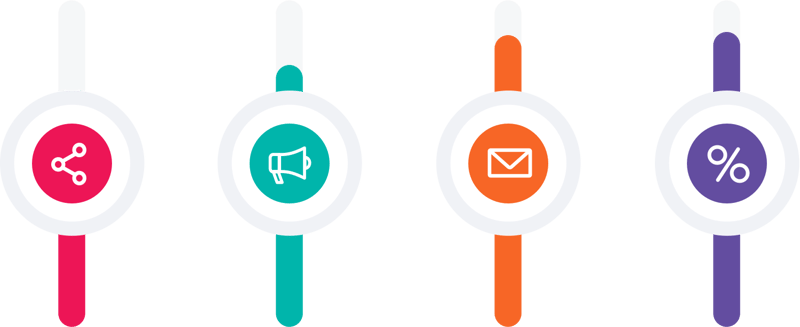
The less companies know about their KPIs, the less likely they are to meet their revenue goals. 74% of companies that weren't exceeding revenue goals did not know their visitor, lead, MQL, or sales opportunities. Source:https://www.hubspot.com/marketing-statistics
3 Does inbound marketing bring more sales?
Imagine if your website worked for you to generate leads even when your sales team was done for the day. How much would your sales team benefit by getting new, qualified leads complete with business intelligence including job title, budget information, needed products or solutions, and what solution the prospect currently uses?
Companies that use inbound marketing software get up to three times as many websites visits and nearly four times as many leads. Nearly half of all buyers view up to five pieces of content before engaging with a sales representative, according to online marketing website Demand Gen Report. Additionally, inbound marketing software can help companies gather a history of how each lead interacts with your company’s website or online properties, such as social media and email marketing.
Companies that use inbound marketing get four times as
many leads as those that don't. Which side do you want to be on? #TeamInbound
Planning your website's design, marketing content, and functionality to attract the leads you want and then to nurture them until they are ready to talk to your sales team helps boost your results.
4 How inbound marketing identifies qualified leads
When implemented correctly, the inbound methodology provides business leaders with a clear picture of where leads come from and how much it costs to acquire them. Inbound marketing will help your business or organization attract more visitors to your website.
What about visitors who aren't ready to buy? Or those who aren't ideal customers? Sales and marketing teams can filter strong prospects from casual searchers with qualifying offers that use permission marketing, such as a form submission. By gauging a visitor’s level and area of interest by offering help that requires filling out a form, your website becomes a lead-generation tool that helps separate real buyers from unqualified leads.
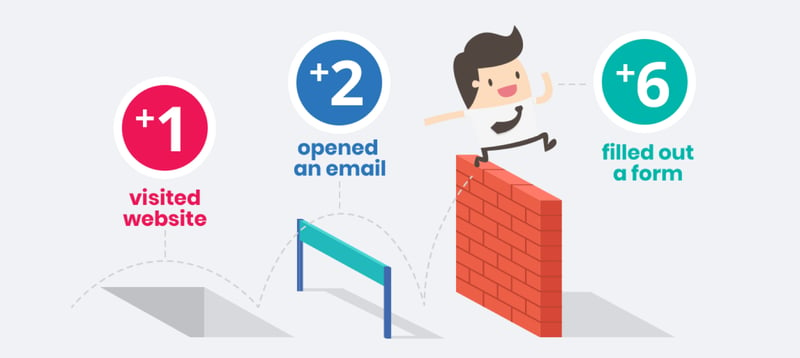
Lead scoring is another element of inbound marketing that gives businesses a way to identify good prospects based simply on what you know about them and how they’ve interacted with your website, email marketing, or other online marketing. Lead scoring automatically assigns point values for prospect criteria such as their budget, job title, content downloads, email click-throughs, region, or even company name and website address. By creating this automatic scoring system, your website and marketing automation tools create a sales and marketing funnel to filter your website visitors into buckets of casual searchers, potential prospects, and hot leads ready to talk to your sales team.
5 Inbound marketing vs. outbound marketing
The inbound marketing approach is different from traditional advertising and marketing (or outbound marketing) because inbound is not about disrupting somebody’s life to get them to listen to your sales pitch. Instead of unleashing a barrage of TV ads, telemarketing, or direct mail, modern marketers can use the power of the internet to deliver the type of information your target customers are searching for at the very time they need it.
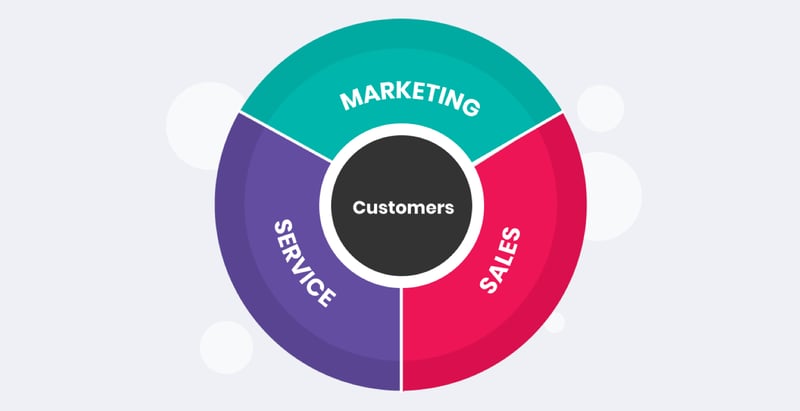
Inbound marketing is focused on understanding what your ideal customers need and then delivering it to them in the way that is easiest for them to find. Where outbound marketing wants to interrupt, inbound marketing is based on opt-in permission. Instead of direct mailing 10,000 people on a purchased mailing list, inbound marketing draws in people who actually want to share their email address so you can give them more helpful information. It’s about responding to what your prospects want and connecting with them where they want to connect with you.
Studies have shown that less than 10 percent of viewers consistently watch online video and TV ads. This simple stat represents a serious shift in focus for sales and marketing teams from brands and features to customers and benefits.
Inbound marketing is about helping people find the answers they need when–and where–they are looking for it. #HelpfulHumansDoInbound
Marketers now have access to vast quantities of data available that didn't exist 30 years ago and inbound marketing gives businesses the power to leverage that data. Consequently, the days of tossing one message out to a mass audience and crossing your fingers are over. You're now able to communicate with potential new customers on a more segmented basis, or even in one-to-one relationships, empowered with increased knowledge of who you're talking to and what they need.
6 Inbound marketing definitions
To be an inbound marketer is to be constantly inundated with information, including an ever-changing list of key terms. Keeping up with the lingo can be tough, but it’s necessary if you want to stay ahead in the dynamic landscape of digital marketing. Enter our Raka Inbound Marketing Definitions, where we give you the skinny on inbound marketing terms and why they’re important.
For busy marketers, downloading our inbound marketing definitions guide can give you a handy reference as you explain inbound methodology and ideas to your internal team or your company's leadership. Be sure to check back often as we update our definitions!
A/B Testing
A marketing experiment where you split your audience to test variations of a campaign and determine which performs better.Analytics
Using data to measure and analyze the performance of your marketing strategy and to improve its effectiveness for a better return on investment.
API
Application program interface. APIs are commonly used in marketing and sales operations to allow data to flow between systems, such as HubSpot and SalesForce.Automation
Technology aimed at automating repetitive tasks and data collection in marketing contexts.B2B
Business-to-business. B2B marketing consists of strategies and techniques used to promote one company’s products or services to another business.B2C
Business-to-consumer. B2C marketing consists of strategies and techniques used to promote a company’s products or services to consumers.
Backlink
An incoming hyperlink from one web page linking to another website.Blog
A (hopefully) regularly updated website or webpage, designed to deliver content to a target audience in the form of articles or “posts.”Brand Animation
A form of video marketing that promotes a brand, the company’s culture, and products and services.Branding
The promotion of a product or company by using advertising and distinctive design, and which sets it apart in look and feel from competitors in the eye of the consumer.Buyer Persona
A semi-fictional representation of your ideal customer based on market research and real data about your existing customers.Call-to-Action
A link, image, or button designed to get your audience to take a specific, desired action.Campaign
The almighty campaign. You’ve heard the word countless times if you’ve been involved in sales or marketing for any amount of time. HubSpot has a built-in campaign tool that allows you to tag applicable assets—from content to contacts—so that you have a fully inclusive view of everything that ought to be measured and assessed within associated marketing efforts.Chatbot
A computer program or artificial intelligence that can conduct conversations with online users in a convincingly human way, often through pop-up prompts on a company’s website.Chatflow
A chatflow is a simple script you can set up within HubSpot to enable your live chat functionality to connect site visitors directly with members of your team. A chatflow helps to prequalify users with a set of scripted questions that will help navigate them to the right party or source.Chat Widget
Tool on a website that allows visitors to chat with a live person, usually for sales or service.Closed Loop Marketing
A method of tracking performance by using data and insights to connect sales team reporting to marketing activities and assets.Company Record
Along with contact records, you can also create a company record within HubSpot, which allows you to align applicable information related to a company you’re marketing to, selling to, or servicing. This is a central informational resource that allows applicable members of your team to quickly engage with and understand all of the operative measures you’ve taken with a specific company. You can also tie contact records to company records further bolstering the connectedness of the entire relationship.Contact Record
The lifeblood of every marketing and sales platform is the contact. Contacts are the people that reside in your database, whom you’ll manage and nurture depending on what type of relationship you have with each unique person. A contact might be a prospect, a qualified lead, a customer, or any other applicable party who is either actively engaged with your business, or someone you’re trying to get more involved with. It’s worth noting that your HubSpot account is met with different fiscal price points depending on the number of contacts you’re housing in your database.
You can organize contacts into lists in HubSpot, which makes it easy to nurture leads based on their buyer’s journey stage or other behavioral aspects, or properties.
Content Planning
The planning, creation, and ongoing management of content within your inbound marketing strategy.Conversion Rate
The percentage of people who completed a desired action on a single web page, such as filling out a form.Customer Relationship Management (CRM) System
A digital platform that companies use to manage, track, and analyze interactions with customers and potential customers.Data
The metrics and key information, numbers and otherwise, that you use to determine how effective your marketing efforts really are.Deal Record
Deal records can be created within a contact or company record and enable you to track potential revenue in HubSpot. When a deal record is associated with a corresponding contact and/or company you can easily associate relevant activities leading to a closed transaction (won or lost).Demand Generation
The process of increasing awareness and interest in a company’s products or services and building trust in the brand so that consumers will want to buy those products or services.Digital Marketing
Marketing to people via their electronic devices, mainly on the internet. This includes the use of email, social media, search engine optimization, and other digital platforms and tools.Display Ads
Advertising on websites, apps, or social media, such as banners at the top of the web page, which include text, images, video, and audio, and often link back to the advertising company’s website.Email Marketing
Any marketing in which you utilize email to reach contacts, leads, and clients with messaging.Facebook Pixel
A piece of code for your website that lets you measure, optimize, and build audiences for your ad campaigns on the world’s largest social media platform. When someone takes an action on a website, the Facebook Pixel reports the action, giving companies more insight on their social media advertising.Flywheel
A model for business growth that focuses on using the momentum of happy customers to drive referrals and repeat sales.
Forms
A way to capture information from a visitor or prospect with the intent of converting them into a lead, this is typically found on your website or a landing page.Google Keyword Planner
A free resource offered by Google that allows advertisers and marketers to search for keywords and estimate their performance.Google Search Console
A free service offered by Google that helps you monitor, maintain, and troubleshoot your site’s presence in Google Search results.Grading
The art of assigning numeric or letter grades to marketing leads and prospects in order to rank the most important contacts for marketing campaigns.Hash Tag
A word or phrase preceded by a hash sign (#), used on social media to identify organize content and track discussion topics based on those topics. Hashtags can help increase engagement, boost organic traffic, and get your brand name in front of new people.H Tags
H tags are HTML elements used to help organize a page and determine what readers and search engines should care about.HubSpot
A developer and marketer of software products for inbound marketing and sales. It’s all-in-one marketing automation software includes tools for social media marketing, content management, web analytics, and more, aimed at attracting visitors, converting leads, and closing customers.Inbound Methodology
A method of marketing that focuses on creating content to naturally bring potential customers to your company, product, or service.Influencer
A person with the ability to influence potential buyers of a product or service by promoting or recommending the items on social media.Infographic
The combination of text and visual images to present complex information or data quickly and clearly.Integration
Integration, as it relates to HubSpot, is the action of syncing and aligning an organization’s marketing and sales tools to their HubSpot account, enabling two-way communication of the internal CRM functionality, ensuring the proper overall management of the contact database. Some common integrations in HubSpot include PandaDoc for contracts, Zoom for video conferencing, and even Canva for design.Javascript
An object-oriented programming language commonly used to create interactive effects within web browsers and track visitor actions.Keywords
The words or phrases your target audience is using to search for information on the internet, a.k.a. the building blocks of SEO.Landing Page
A page designed for the sole purpose of converting a visitor to the next stage of the buyer’s journey.Lead Generation
The method of enticing people to provide their information to a business in exchange for content of some value, such as a template or guide. Their information is then used to market to them in the future.Lead Status
When a contact in a company’s database becomes a marketing qualified lead (MQL), or a sales qualified lead (SQL), they can then be defined by the status of how they’re being handled or served by your team. You can name these conventions—the literal lead status—to best line up with how you serve your contacts based on your organizational processes and where they’re at in the buyer’s journey.Lifecycle stage
The lifecycle stage defines where a contact is within an organization’s marketing (or sales) process. There are templated lifecycle stages within the HubSpot platform, but you can create custom naming properties to best align with your unique needs.Listening
Monitoring your brand’s social media channels for any customer feedback and direct mentions, as well as discussions about specific keywords, topics, competitors, or industries. This is followed by an analysis of those discussions to gain insight and act on those opportunities.
Marketing Video
Using video to heighten brand awareness, attract potential customers, and increase interest in your products and services.Messaging
- The approved set of key points or messages an organization uses to talk about its products, services, and what the company stands for with a target audience.
- A platform that enables people to send text, photo, video, or audio messages via internet or mobile device, and can increase a company’s ability to engage with prospects and provide customer service.
Minification
Part of helping your site load faster, this is the process of removing unnecessary or redundant data in HTML, JavaScript, or CSS files without affecting how the resource is processed by the browser, such as code comments and formatting, removing unused code, or using shorter variable and function names.Mobile Optimization
Any action taken to improve the experience of visitors to your site from mobile devices.Motion Graphics Animation
A kind of digital animation that includes text and audio to communicate a message to the viewer.Nurture
An action taken for the purpose of bringing a lead further down the sales funnel toward becoming a customer.Offer
Any piece of content put behind a landing page that is given to a lead in exchange for information about themselves.Organic Traffic
Whether used in reference to website traffic, search results, or social media engagement, it is the measurement of how many people have come to a company naturally over time, rather than via paid links or boosted posts.Outbound Marketing
Using methods that seek to interrupt a person’s life to get them to pay attention to a message, such as TV and radio commercials, direct mail, telemarketing, and print advertising.Pageview
An instance of an internet user visiting a particular page on a website.Paid Search
A form of digital marketing where companies pay search engines such as Google and Bing to show ads in key locations on their search engine results pages (SERPs).Partitioning
Within the HubSpot platform, you can set up partitioning rules that enable you to assign different assets correlated with a project to different team members or any applicable people working on the project connected to an account.Personalization Token
Personalization tokens enable you to serve personalized content to your contacts based on certain property values in your HubSpot CRM. Personalization, at its core, is a means of speaking to your contacts in a “direct” manner, with hopes of increasing engagement with the marketing campaigns that exist on your site, within emails, etc. You can personalize the content in your HubSpot emails, website pages, and landing pages with ease by selecting a default contact property or custom contact property.Process Documentation
A list, tutorial, or document of any kind that explains all the steps needed to complete a marketing process.Programmatic Advertising
The automated buying and selling of digital advertising via networks that rely on algorithms to place ads for advertisers.Properties
Properties, which apply to contacts, deals, companies, and more, are the unique pieces of information that are stored in your HubSpot CRM. Some properties are default, such as email address, but HubSpot also allows users to create custom properties based on their own business needs. For example, your business may create a custom contact property for “Booked Appointment” or “Ticket Holder.”
Properties come in various formats, including checkboxes, dropdowns, short answers, or number formats ranging from dates to currency. Properties can be used to gain a deeper understanding of contacts, deals, or companies, sort data in the CRM, or allow users to self-select in forms.
Qualified Lead
Leads are considered “qualified” when they reach a certain level of engagement with online content and are more likely to respond to being marketed or sold to.Quiz
A lead generation and capture tool that asks site visitors to answer a series of questions about themselves.Remarketing
A form of online advertising that targets digital ads to consumers based on their previous internet actions, such as visiting a company’s website.Return on Investment (ROI)
The value attributable to a set of marketing initiatives, divided by the marketing invested for that set of initiatives.Score
Score is a property that can be utilized in HubSpot to actively keep track of the engagement between a user and the business. Lead scoring is a pre-defined set of numerical attributes that trigger marketing automations in an attempt to keep moving them along in their buyer’s journey by serving them with assets that aid in their decision-making process. You have the ability to associate positive and negative scoring metrics to a contact’s lead scoring property.Search Engine Optimization (SEO)
An activity done in the name of improving search engine rankings.Search Engine Results Pages (SERPs)
The list of results a search engine returns, including advertising, in response to a keyword query. Each listing includes the page title, URL, and a brief description of the page content.Sequences
HubSpot’s sequences tool is another automated tool that allows you to send a series of 1:1 email communications that are targeted and timed email templates helping you to further bolster your lead nurturing efforts. Along with the sequences you set up, you can create automatic task reminders that prompt you to follow up with specific contacts depending on their actions as users. When contacts reply to the email or book a meeting, they are automatically unenrolled from the sequence.Smart Content
Smart content is a dynamic (some might refer to it as “adaptive”) element of a website, advertisement, or email that alters depending on a user’s behavior in past digital engagements. This is important (or, ahem, smart) in that it helps to create a more personalized experience better catered to their unique need(s). HubSpot Marketing Hub Professional and Enterprise level customers can create such pieces of smart content as CTAs, forms, landing pages, web pages, rich text modules, or emails.SMART Goals
An acronym that describes concrete targets a company strives to achieve over a certain period of time.Social Media Management
The process of creating and engaging with content posted on social media platforms, and monitoring and analyzing how the audience engages with your brand and similar brands within your industry.Tags
A kind of metadata that includes a descriptive term or keyword assigning some kind of digital content to a category. Depending on the platform, assigning tags to content can boost SEO.Thank You Page
A webpage users are redirected to after they submit contact information to a form on a landing page.Thought Leadership
An individual or company recognized as an authority in a specific field and whose expertise is sought and often rewarded.Uniform Resource Locator (URL)
URL stands for Uniform Resource Locator, which is a protocol for specifying resources on the internet.User Experience/User Interface Design (UX/UI)
An approach to the design and development of websites that focuses on creating an easy-to-use, attractive, and responsive experience for users.
Video Conferencing
Tools that allow users to “meet” virtually with video, sound, and screensharing capabilities.Viral Content
Any piece of content that suddenly becomes wildly popular on the internet.Wireframe
The “blueprints” of your website that help web designers and developers visualize the framework of all your website’s pages.Workflow
A series of automated actions set in motion by a visitor’s behaviors or contact information.XML Sitemap
Extensible Markup Language (XML) is a markup language, much like HTML, that defines a set of rules for encoding documents in a format that is both human-readable and machine-readable.Yoast
Yoast SEO is a plugin for WordPress that guides the technical optimization of your website content.YouTube
A video sharing platform where registered users can upload and share videos with anyone who has access the site, as well as videos embedded and shared on other sites.buZzwords
A buzzword is a word or phrase that is popular at a particular time or in a particular situation.Are You Getting The Most Out Of Your HubSpot Account?
Register for a free HubSpot audit with Raka and we’ll help you find ways to increase marketing efficiency and improve your return on investment in HubSpot.


